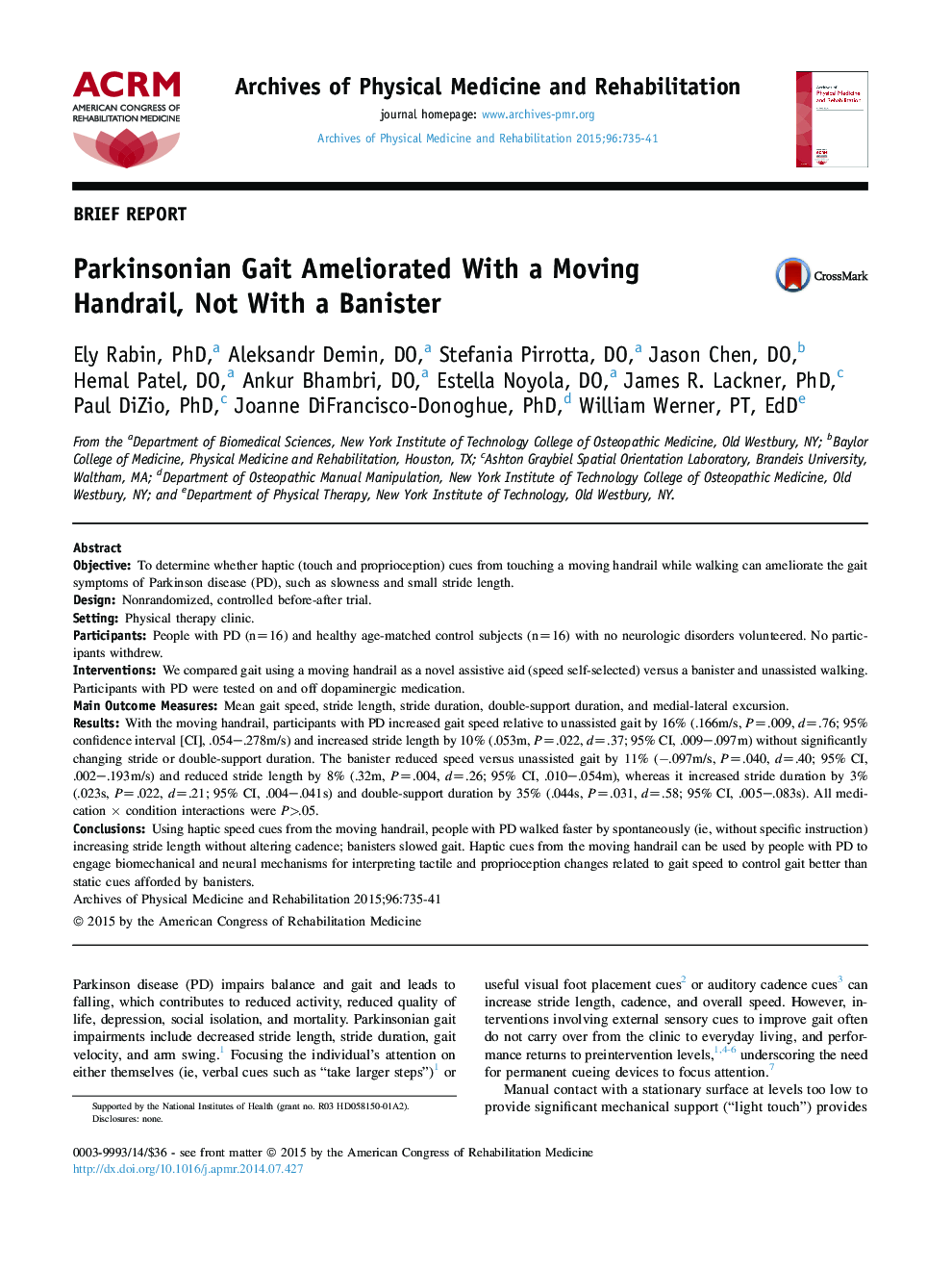| Article ID | Journal | Published Year | Pages | File Type |
|---|---|---|---|---|
| 3448168 | Archives of Physical Medicine and Rehabilitation | 2015 | 7 Pages |
•A target gait speed is conveyed by touching a moving handrail during gait.•We compared the gaits of patients with Parkinson disease under 3 conditions: (1) unassisted; (2) using a banister; and (3) using a moving handrail.•We found the moving handrail increased gait speed; the banister reduced gait speed.•Parkinsonian gait is ameliorated with moving haptic speed cues.
ObjectiveTo determine whether haptic (touch and proprioception) cues from touching a moving handrail while walking can ameliorate the gait symptoms of Parkinson disease (PD), such as slowness and small stride length.DesignNonrandomized, controlled before-after trial.SettingPhysical therapy clinic.ParticipantsPeople with PD (n=16) and healthy age-matched control subjects (n=16) with no neurologic disorders volunteered. No participants withdrew.InterventionsWe compared gait using a moving handrail as a novel assistive aid (speed self-selected) versus a banister and unassisted walking. Participants with PD were tested on and off dopaminergic medication.Main Outcome MeasuresMean gait speed, stride length, stride duration, double-support duration, and medial-lateral excursion.ResultsWith the moving handrail, participants with PD increased gait speed relative to unassisted gait by 16% (.166m/s, P=.009, d=.76; 95% confidence interval [CI], .054–.278m/s) and increased stride length by 10% (.053m, P=.022, d=.37; 95% CI, .009–.097m) without significantly changing stride or double-support duration. The banister reduced speed versus unassisted gait by 11% (−.097m/s, P=.040, d=.40; 95% CI, .002–.193m/s) and reduced stride length by 8% (.32m, P=.004, d=.26; 95% CI, .010–.054m), whereas it increased stride duration by 3% (.023s, P=.022, d=.21; 95% CI, .004–.041s) and double-support duration by 35% (.044s, P=.031, d=.58; 95% CI, .005–.083s). All medication × condition interactions were P>.05.ConclusionsUsing haptic speed cues from the moving handrail, people with PD walked faster by spontaneously (ie, without specific instruction) increasing stride length without altering cadence; banisters slowed gait. Haptic cues from the moving handrail can be used by people with PD to engage biomechanical and neural mechanisms for interpreting tactile and proprioception changes related to gait speed to control gait better than static cues afforded by banisters.
